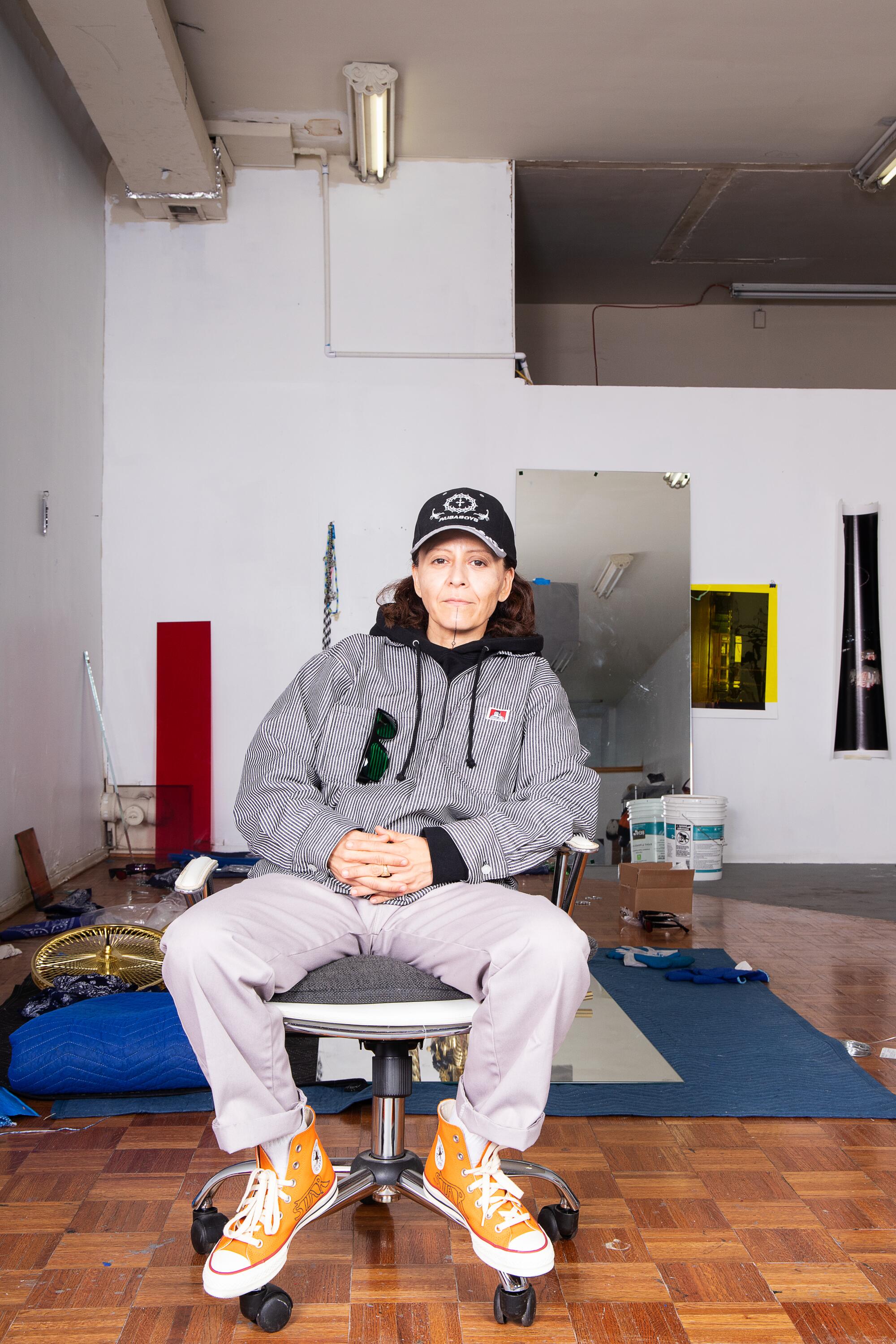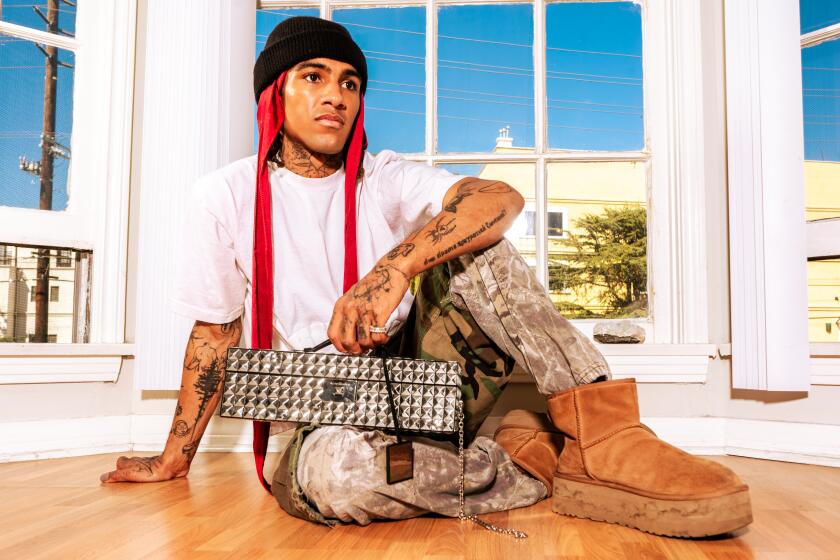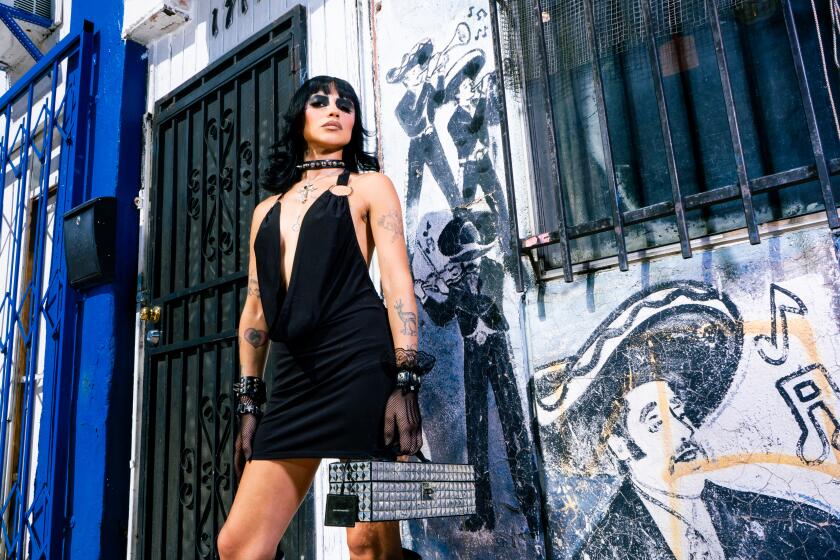
This story is part of “Corpo RanfLA: Terra Cruiser,” a special collaboration between rafa esparza, Image magazine and Commonwealth and Council. See how the whole project came to be here.
I grew up in Boyle Heights, East L.A. I spent most of my teenage years in East L.A. I love to share that where I lived, I could see Whittier Boulevard, which is a cruising site. So I was pretty much exposed to that culture, to this kind of lifestyle, at a very young age. I didn’t come from a family that owned lowriders — not everyone did or could afford these cars — but they were always in front of me. I could see them from my window.
In some ways, it was part of who I was, who I am. Growing up in East L.A., it wasn’t necessarily always safe, especially for a young girl or a teenage girl back in the day. I think it’s important to talk about the complexities of East L.A., without leaning toward one side — like the celebration and the beautiful things. I did grow up in a time when violence was at its peak again; there were the 1992 L.A. uprisings, police violence, gang violence, war on drugs. For me, it was about living in a time and place where no one taught us how to survive — no one said, “You need to break these rules.” We were rebelling, we were surviving, we were resilient. We still are.
The work that I’ve been doing as an artist always comes back to belonging and memory. For example, the photographs that I had in the Whitney Biennial were all of landmarks or meaningful sites from my childhood. My approach is to be very intentional — paying attention to what it feels like when I think about my memories in these locations. I want those emotions and energies to be translated in the work. Was a given night hazy, hot, quiet? How do I capture that in photos? They’re very cinematic. This is the representation of L.A. for me — it’s not the Hollywood sign or the beach. It’s the experience of being at night, running the streets, while the city sleeps.
I’ve been collecting materials like magazines, party fliers, clothing, photographs — all are mostly focused on ’90s subculture in L.A. — and posting them on Instagram. I have Street Beat magazine, which is a magazine that was published from 1990 to 1996. It started in El Monte, SGV. It felt like a yearbook, or a family album, where teenagers would check out cameras from school and then take these cameras to the parties, or cruising, and take pictures and publish them in this magazine. The editors, everyone, were all youth. Party fliers were also made by teenagers using computers in school. We didn’t put the address on the flier; we didn’t put the location of where the party was going to take place. Instead, we had this term called “map points,” which is kind of a pin where you meet the person that has a direction — let’s say a gas station or a grocery store parking lot. You would go there, give them money, give them two bucks, and then the person would give you a little piece of paper with the address. That was our ticket to get into the party.
I’ve been hosting these physical materials in my studio, and the goal is for me to open a community archive space, a space where people can come and run workshops. These are all stories that weren’t being preserved in institutions. It’s this piece of a puzzle that was missing. It’s not just my own work; we’re doing something together — people have been donating materials. We’ve been almost starting this movement about the archive, our histories, and challenging the world, challenging institutions to rethink and resee us in a different light.
I noticed that when I started this project on Instagram — two projects, “Map Pointz” and “Veteranas and Rucas” — I had gotten rid of many things from my teenage years, and I started wishing that I had kept them. But then, I was also meeting people who wanted to get rid of them. Not because they were like, “This is trash” — everyone knew that there was some importance. “Why did we hold onto this for over 20 years? Now that it’s been 20 years, we don’t want to just throw them out” — these are the people who are donating the materials. It almost feels like, in order for us to have something to reflect on or have proof, we need those things. Like, these moments existed — here is this to tell you the story. The beauty about it, too, is that I’ve had experiences where I pick up these boxes of fliers or clothing or magazines, and I can smell a perfume, a home’s smells. By saving these materials and people handing them to me, it’s almost like we’re humanizing these archives.
The body is an archive. When I started thinking of our bodies as these containers, I was reading a lot of philosophy and thinking about my cousin’s death and the way he was murdered — he was stabbed, he was punctured. There’s pain there. And I think that experience for myself, or even when someone passed away in a violent way, to me — it’s again, like the fliers, this is evidence. Even scars or bruises, but also memory. Before I started this archive, I’d call back home and talk to my sister as an adult — this was 2014, when I was living in New York — and I’d ask questions like, “Hey, do you remember this person? Do you remember this party, do you remember where it was?” And she couldn’t remember. But then the next week, she’d remember. It’s almost this fluctuating thing that kind of expands — we forget, suddenly we remember, or other people remember certain things. That’s why I really like this idea of collective memory. Because that’s what’s happening with the archive on Instagram, where all these senses get activated, and then it encourages us to talk about our own memories. It’s almost this chain reaction. That’s what I mean when I say the body is an archive.

When I started thinking about the archive, I was living in New York, and I was missing home. I moved to New York when I was 20, in 2000. After experiencing a lot of trauma here in East L.A., I felt like maybe I could start from scratch. By doing that, I often needed to disconnect myself from my community, family, friends in L.A. I lived in New York for 15 years, and then I started calling home around 2013 or so. I was missing my sister, I was missing my experience in L.A. I was pretty much stalking L.A. through the internet, reading the L.A. Times every day. Googling, searching people that I grew up with to see if they were still around, or what they were up to.
I ended up moving back to L.A. in 2015. I had already built a community prior to moving here because of my work. I also reconnected with friends and family I knew before I left. So it wasn’t like I had to start from the beginning again. rafa esparza was one of the first people I met when I moved back. The funny thing is that rafa and I had overlaps even before I moved to New York. I was in this punk band when I was a teenager, and we used to play all over L.A. And he told me, “I think I saw you guys play.” We didn’t know each other.
But the moment that really stands out is one of those trips that I made when I still wasn’t living here, around 2014, but was spending a lot of time in L.A. before moving back. My nephew and I were driving around the East L.A./Boyle Heights area, and I was visiting all these sites that I had spent time in, hanging out in, and we drove under this bridge on 4th Street and Lorena. We drove by it and stopped, and then I saw two hands on the wall with blood — very dramatic — and I told my nephew, “Oh, my god, like, what the f— is that? Did something bad happen?” My nephew made up all these assumptions and stories of what could’ve happened; I took a picture. Then I met rafa, maybe the year after that, and I don’t know how that came up — maybe I saw a picture online — and it was actually from a performance he had just done. We always talk about it — funny thing that I was making up all these stories, but it was a performance that he had done a week before.






